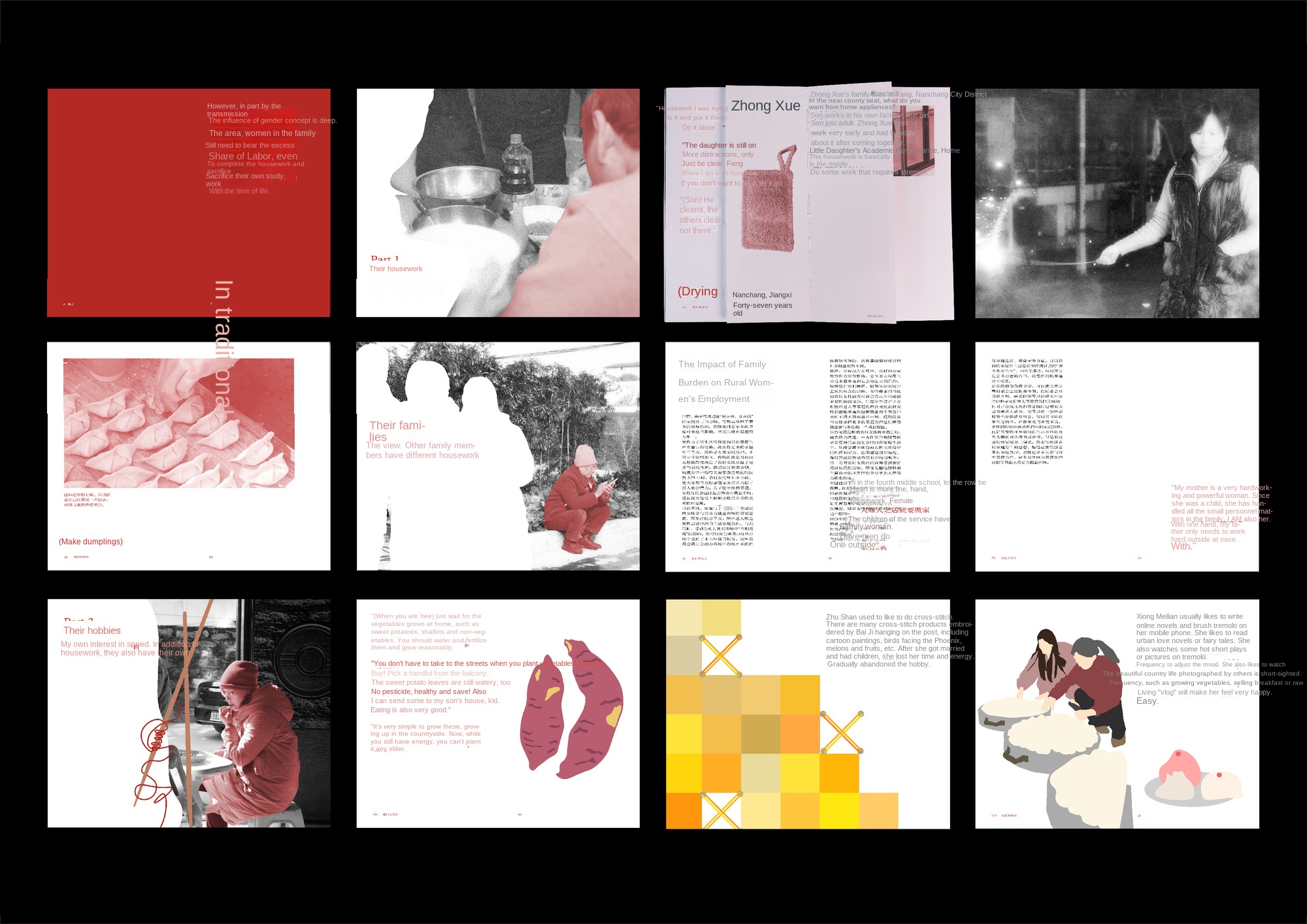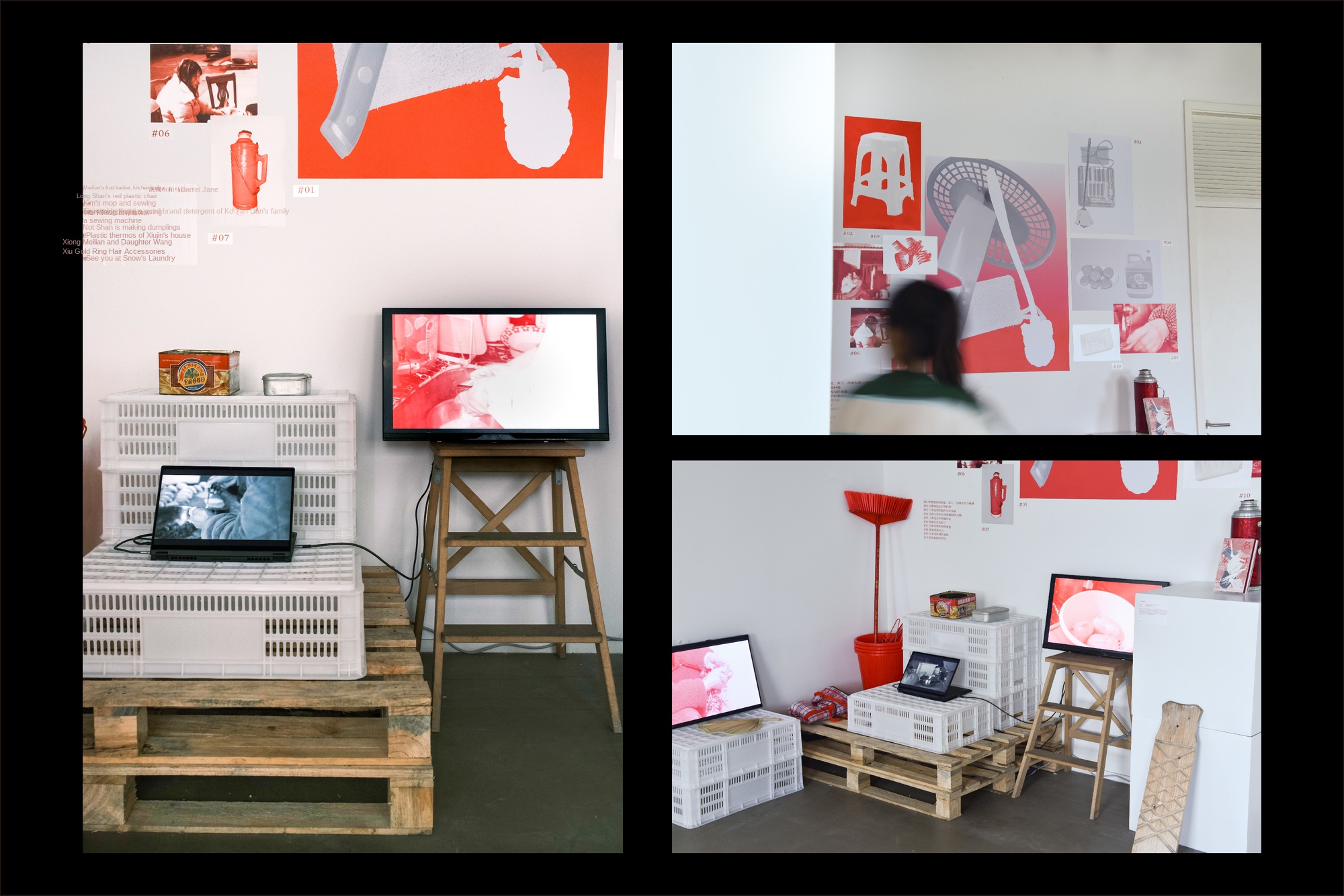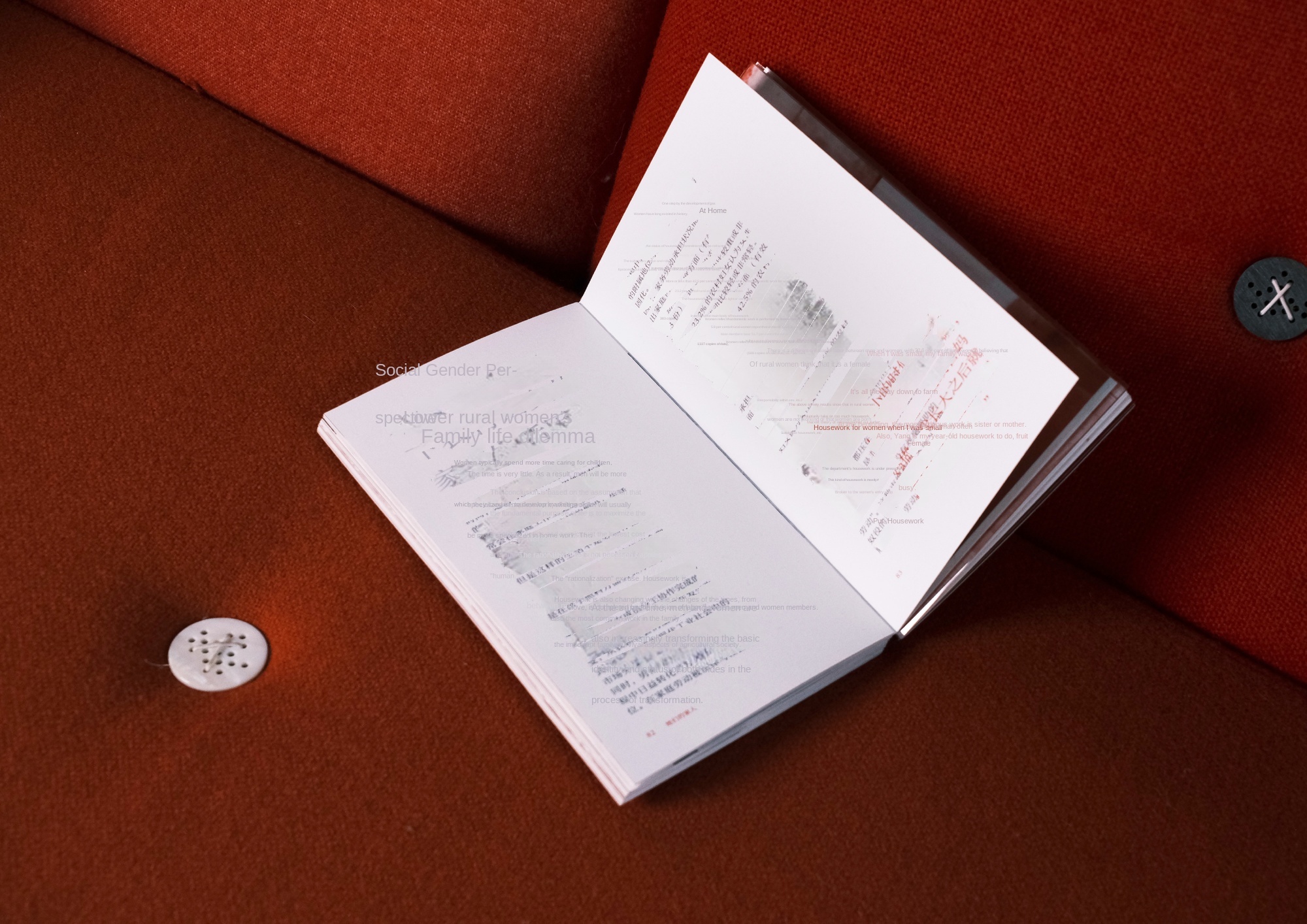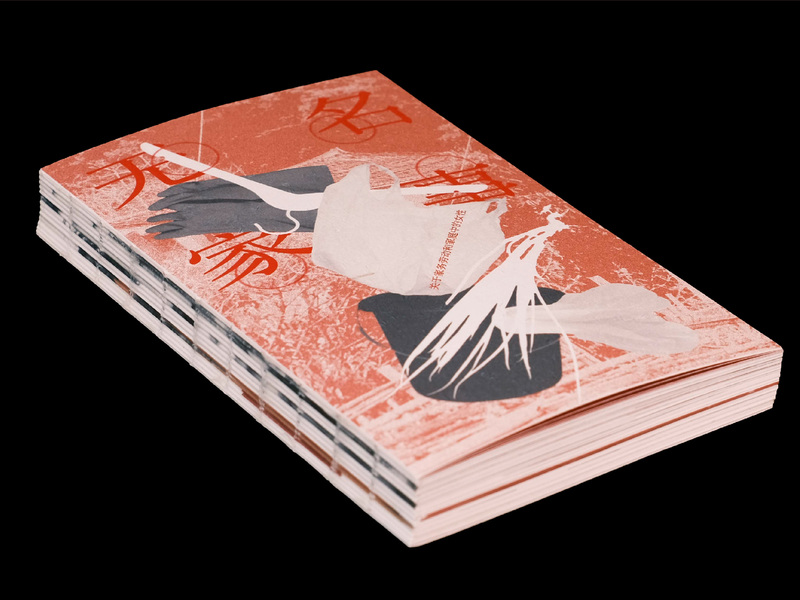
Secretary inside page preview
Books as the focus of the whole project, mainly by field interviews, related academic papers, video and graphic design and other content.

Exhibition Site 01
The exhibition space is composed of multi-screen images, multi-size posters and visual elements related to rural housewives, aiming to present the social division of housework and its impact on female groups.

Exhibition Site 02
With the help of objects and visual symbols in daily life, the exhibition design enhances the narrative and reality of the exhibition, making it easier for the audience to resonate.

Book real page
The inner pages of the exhibition books are actually shot, covering the author's research records, interviews with women in villages and towns and visual experiments.
Based on the author's research on the gender division of housework in villages and towns in southeastern China, this work records the thoughts and feelings of six women of different ages living in Fujian and Jiangxi on housework, family and personal life. Combined with his own life experience, the author explores the topic of housework and gender equality visually, and presents it in the form of books, posters, printed matter and dynamic images. The work aims to arouse the public's attention to the labor welfare of women in villages and towns, enhance the self-awareness of working women, and then promote the construction and development of women's well-being.
Housework is the basic activity to maintain family operation and social development. However, in the traditional Chinese social structure, housework has been undertaken by women for a long time. With the improvement of social productivity, women gradually get the opportunity to go out for employment, but in some villages and towns in the transition period in southeastern China, due to the influence of traditional culture and social concepts, there are still significant gender differences in the distribution of housework. This project is based on this reality, through the book binding, graphic design and dynamic images and other multi-media to carry out visual practice, to explore the impact of the gender division of housework on rural women and even the wider social groups. The work hopes to promote the public's attention to the labor welfare of women in villages and towns, stimulate the subject consciousness of working women under the role of visual communication, and promote the construction of women's well-being in villages and towns and the further development of gender equality. This study is not only rooted in the social reality of Chinese villages and towns, but also hopes to explore the possibility of design in promoting cultural and social change by intervening in social issues through design language.
My design practice focuses on issues such as social equity, power structure and cultural change in China, and focuses on the dynamic relationship between individuals and groups in the process of social transformation. I am currently active in Shanghai and London, exploring the role of design in social research, visual expression and public issues in a cross-cultural environment. My work covers printing and publishing, 3D art, multimedia images and other forms. I hope to use multi-dimensional media techniques to construct visual narration, respond to social phenomena, and promote broader dialogue and thinking.
In the process of creation, I try to use the language of design to intervene in social issues, and present the discussion of social equity, gender issues, labor rights and interests by visual means. My project not only focuses on the influence of social structure on individual life, but also tries to find new possibilities in design practice, so that design can become a medium to promote cognition and change. I believe that design is not only the construction of aesthetics, but also a reflection of social culture. It can establish a bridge of communication between reality and ideal, guide the viewer to re-examine the environment, and stimulate thinking and action on social problems.














